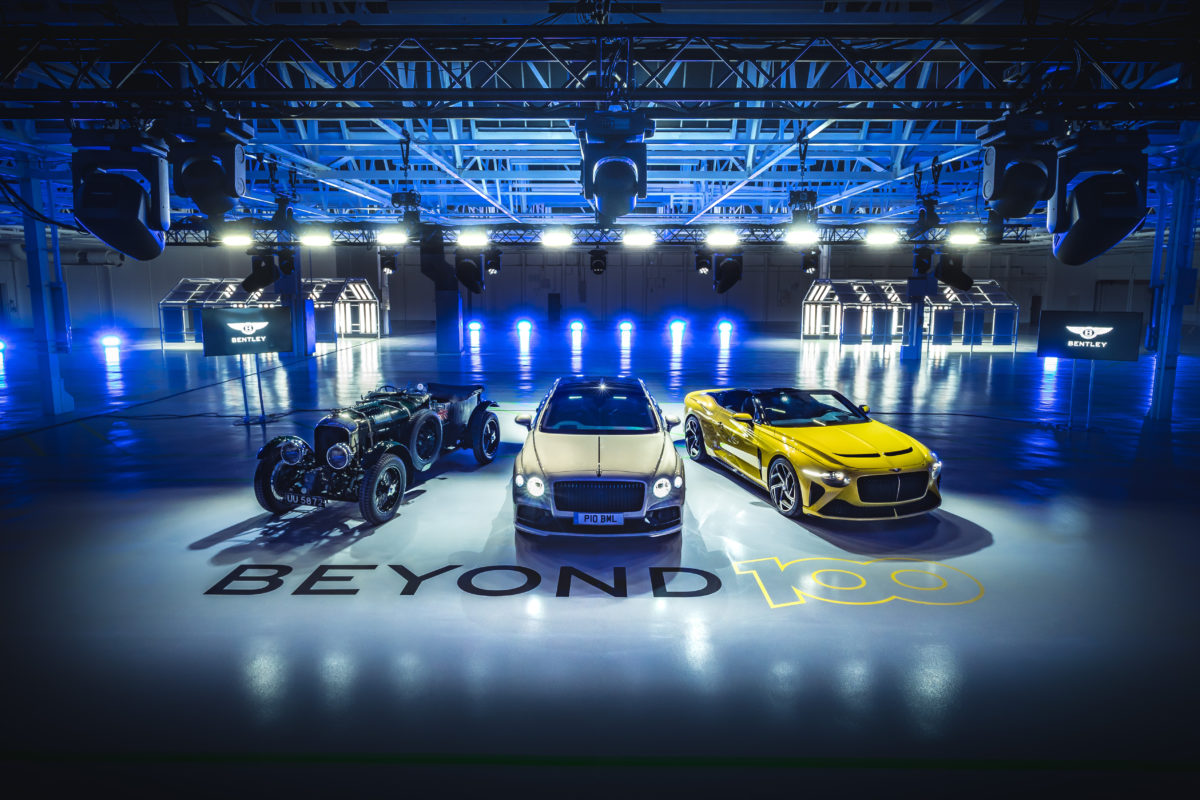Bentley has announced that it will accelerate its Beyond100 Strategy and it will introduce five new battery-electric vehicles starting in 2025. Dubbed the Five-in-Five plan, this is Bentley’s commitment to redefining its credentials as the bench mark manufacturer in terms of high-end sustainable luxury mobility. Earlier today, Bentley also announced that it has received an investment of £2.5 billion or $3.3 billion to allow it to execute its electrification plans.
The first battery-electric vehicle from Bentley will be designed, developed, and produced at its headquarters in Crewe, the United Kingdom which has around 4,000 employees. It will also benefit the brand’s workforce and its home region, which will become a sustainable base for high-value manufacturing in the United Kingdom. Bentley’s Crewe facility will be reworked and turned into a site that will build the next-generation vehicles. Dubbed a “Dream Factory,” the assembly plant will be fully digital, carbon-neutral, and flexible. With the site reaching carbon neutrality in 2019, the facility is now focused on reducing water consumption, waste to landfills, and other environmental impacts related to building vehicles.
Work done to reinvent the Crewe headquarters will form the basis for Bentley’s Beyond100 Strategy and serve as the blueprint in reducing the brand’s carbon footprint on its non-factory operations and vehicles. It aims to be carbon neutral by 2030 and will increase the number of solar panels from 30,000 to 40,000 at Crewe in the next two years. Bentley’s partners are also being encouraged to support the brand’s end-to-end sustainability goals with suppliers expected to meet the minimum standards. This will eventually extend to Bentley’s global retailer network, which is expected to reach carbon neutrality by 2025 or earlier.
“This latest announcement regarding Bentley’s Beyond100 plan confirms the initiation of a major transformative phase in the company’s long and illustrious history,” said Adrian Hallmark, Chairman, and CEO of Bentley Motors. “The world is changing and we need to play our part in neutralizing our environmental impact. That means delivering on our aim to be end-to-end carbon neutral by 2030 and reaffirming our role as the leader in sustainable luxury mobility.”
Bentley currently offers two plug-in hybrid vehicles: the Flying Spur and Bentayga. It anticipates that over 20 percent of its sales will come from electrified vehicles this year. The Flying Spur Hybrid uses a 2.9-liter twin-turbo V6 coupled to an electric motor, a 14.1-kWh lithium-ion battery, and an eight-speed dual-clutch automatic transmission. In total, the system makes 536 hp and 553 lb-ft of torque. It can hit 60 mph in 4.1 seconds before topping out at 177 mph. In all-electric mode, the Flying Spur Hybrid can travel up to 25 miles.
The Bentayga Hybrid uses a 3.0-liter twin-turbo V6 paired to an electric motor, an eight-speed torque converter automatic transmission, and a 17.3-kWh battery. Its combined output is 443 hp and 516 lb-ft. In all-electric mode, the Bentayga Hybrid is good for around 18 miles. Like other Bentley models, the electrified Flying Spur and Bentayga can be extensively customized via Bentley’s coachbuilding arm. Some of its recent projects include the Flying Spur Odyssean Edition and Mulliner Edition.
The brand’s first battery-electric vehicle is due to roll off the production line in Crewe in 2025. This vehicle will be the first step of the larger Beyond100 Strategy because it marks the start of the brand’s move towards a fully electric lineup. We suspect this first vehicle will be crossover like the Bentayga. With utility vehicles being in such high demand, releasing an all-electric one will give Bentley an EV that appeals to a wider range of luxury buyers. Don’t expect the brand to forgo its sedans and grand tourers, though, because those will follow closely.
